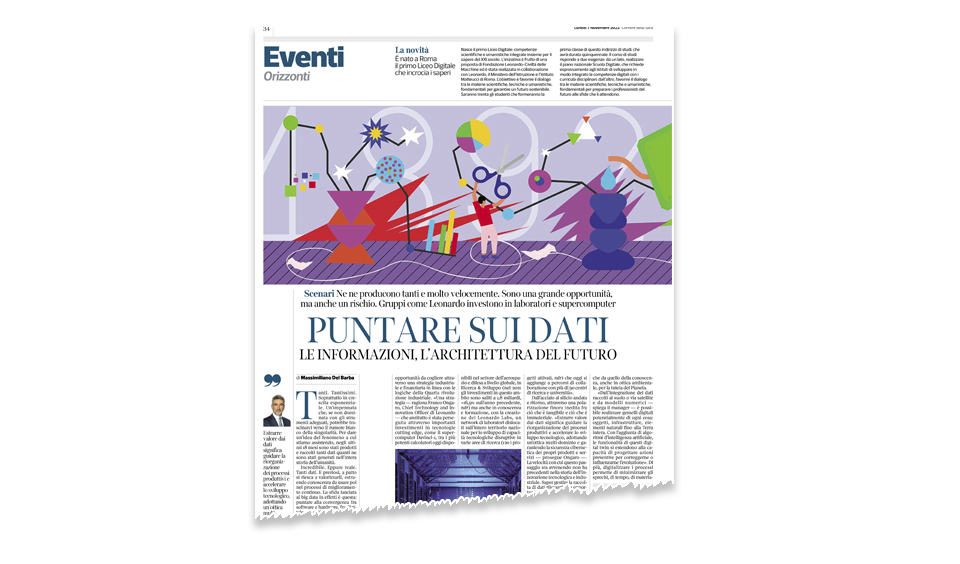The convergence between the real and the digital dimension is creating a continuum that makes a data-driven culture truly strategic. What links smart cities, efficient public services, or industrial and technological transformations is the centrality of data, seen as the oil of the future, to be managed and protected in order to extract the maximum value possible and gain a real competitive advantage. Extracting value from data means driving the reorganisation of production processes and accelerating technological development, adopting a multi-domain perspective and ensuring the cyber security of our products and services. The speed at which this shift is taking place is unprecedented in modern history. Suffice it to say that the data collected over the last 18 months is equivalent to that collected throughout the history of mankind. This growth is set to increase in the future, as suggested by recent estimates according to which by 2027 Big Data Analytics will exceed the $100 billion mark.

Franco Ongaro, Chief Technology and Innovation Officer at Leonardo, discusses this topic - and more - in an interview with the Corriere della Sera. Extracting value from data means driving the reorganisation of production processes and accelerating technological development, adopting a multi-domain perspective and ensuring the cyber security of our products and services.
Leonardo: investment in infrastructure and Research & Development
Leonardo is focusing on convergence between the manufacturing and the digital spheres as a factor for transforming production and design models. This strategy is pursued with investments in new infrastructure such as the davinci-1 supercomputer, one of the world’s most powerful in the AD&S industry, capable of performing 5 million billion operations per second, and driving industrial digitisation.















